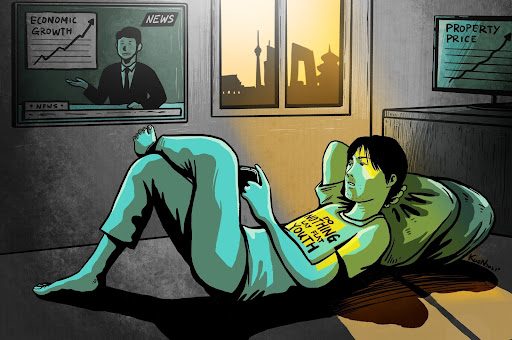
ANASTASIA PYRINIS – MARCH 16TH, 2018
Bitcoin has been taking the world by storm. In December, the “open-source, peer-to-peer digital currency” hit an all-time high, reaching a value of $19,843 per coin, and the market worth over $100 billion. However, despite reaching this record, bitcoin’s “sevenfold increase in value since the start of the year… has led to many warnings” that the bitcoin “bubble” may be “about to burst.” And it seems like it did once the new year began. Since the start of the year, bitcoin has “lost more than $72 billion in value.”
One outspoken skeptic is Thomas Bertani, chief executive at Eidoo, a cryptocurrency wallet provider. Bertani argues that “the market realized that the price rise” of bitcoin “was overreaching, so people started selling” which has resulted in “many long and short positions that amplify price movements.”
The market fluctuation referenced by Bertani can be traced to the historical emergence of bitcoin as a form of online currency. In 2009, a paper authored by Satoshi Nakamoto, a pseudonym for a programmer or group of programmers, described a form of online currency – decentralized and free from third party control. While the idea was circulated since the advent of the internet in the 1990s, its realization and popularity in the form of bitcoin was largely a result of this landmark paper’s circulation among cryptography experts, coupled with rising uneasiness and dissatisfaction with Wall Street, the government, and central banks.
Nakamoto believed that circulation of bitcoin should begin with “miners” – individuals who dedicated “CPU power to running a special piece of software that allowed them to “mine” for bitcoin. This would generate bitcoin and increase the amount in circulation, eventually increasing in difficulty as more “miners” saturate the market and until the “preordained limit of 21 million bitcoins” was reached. At that point, the amount of bitcoin will remain fixed.
The support of cryptography experts led to the success of bitcoin where other previous attempts had failed. Hal Finney, for example, a cryptographer behind RPOW, an earlier form of digital cash, hailed Nakamoto’s paper as “potentially world-changing.” By 2010, WikiLeaks had begun to receive donations in the form of bitcoin currency, as had various restaurants around the world. Due to increasing popularity, bitcoin’s value increased from $12 to $1,240 over the course of 2013, an increase of 10,250%.
Yet despite its useful and novel properties, particularly its ability to eliminate transaction fraud or “double spending” of currency, bitcoin is not convincing enough as a stable currency for many experts. One prominent naysayer is Gavin Andersen, former “chief caretaker of the code that powers bitcoin,” who in 2010 “held the role of ‘core maintainer.’ Andersen argues that precisely due to its popularity and rapid price increase, “bitcoin will start to malfunction” due to increasing delays in transaction processing. Andersen believes bitcoin is fundamentally flawed because it can only achieve a maximum “seven transactions a second”, a rate far exceeded by the tens of thousands of transactions Visa or American Express handle per second.
In response to this weakness in the currency, Andersen created his own form of Bitcoin in 2016, BitcoinXT, a form that 75% of miners have since adopted. Though created for different reasons, Bitcoin has further splintered into Bitcoin Cash and SegWit2x, the latter of which intends to “have reduced fees for bitcoin transactions.” The added complexity of many different emergent forms of bitcoin currency can contribute to increased price volatility in the market.
It is difficult to ascertain what the future holds for bitcoin. In the 1940s, John Maynard Keynes advocated a novel idea – that of a world currency. Will bitcoin rise to this vision? Perhaps. But the currency splintering that currently exists, coupled with extreme price volatility, does not exactly affirm investor confidence.
Featured Image Source: CoinDesk
Disclaimer: The views published in this journal are those of the individual authors or speakers and do not necessarily reflect the position or policy of The Berkeley Economic Review staff, the Undergraduate Economics Association, the UC Berkeley Economics Department and faculty, or the University of California at Berkeley in general.



